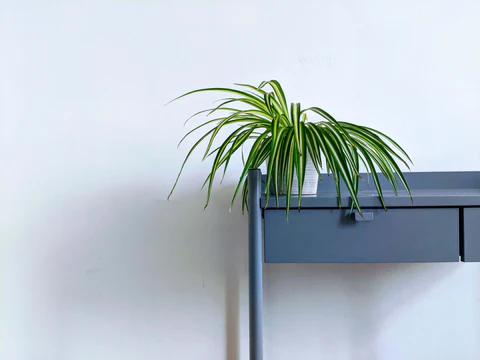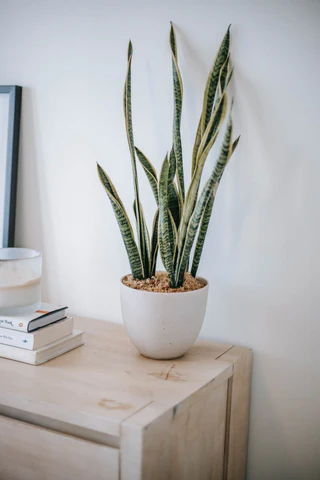7 Plants To Improve Air Quality
Ah, a breath of fresh air! Specific plants have been largely used to improve our indoor air quality and it’s no wonder why. Indoor Air Pollutants have been ranked among the top five environmental risks to public health. How? Stagnant indoor environments (for example, your home regardless of if it’s new or old) allow pollutants to build up and stick around in greater amounts than humans should be breathing in.
We’ve pulled together a list of our favorite air-scrubbing plants and we made sure they were all easy to take care of. Typically, one plant can tackle 100 sq. ft. of air-space in your home.
If you’re thinking of having multiple plants, they can be grouped together but look into which toxins they help with so you can provide the best balance for your home. For best results in keeping your plants alive, we recommend you follow a weekly watering schedule that meets the needs of both you and your plants.

1. Spider Plant
A perfect plant for beginners because of it’s ease. Spider Plants (chlorophytum comosum) prefer bright, indirect light so place these in a room where light bounces off mirrors or walls easily. Water regularly and you’ll quickly find shoots with flowers that eventually grow into baby spider plants.
General Care: Easy. Bright, Indirect Light. Water Regularly.
Helps Remove: Formaldehyde and Xylene
2. Aloe Vera
A plant that can help out with more than just your air. Aloe Vera (a. barbadensis) is a succulent species that makes a great kitchen companion due to its ability to help with burns. The leaves contain liquid full of vitamins, enzymes, amino acids and other compounds that have healing, antibacterial and anti-inflammatory properties. Keep this miracle plant in well drained soil in a brighter area of your home.
General Care: Easy. Bright Light. Water Regularly. Drain Well.
Helps Remove: Formaldehyde
3. Snake Plant
If “hard to kill” is at the top of your list, here is the house plant for you. A Snake Plant or Mother-in-Law’s Tongue (sansevieria trifasciata) can be placed in either bright, indirect light but can also survive in low-light conditions making it perfect for apartments or that room with only one window. It prefers drier conditions, so water occasionally and don’t sweat it if you skip a week.
General Care: Easy. Low-Light. Water Occasionally.
Helps Remove: Benzene, Formaldehyde, Trichloroethylene, and Xylene
Warning: Can be toxic for cats if a large amount is ingested.

4. Dracaena
Dracaena Plants (Dracaena) come in upwards of 40 different varieties. These upright shrubs produce evergreen leaves in green or yellow to cream colors. Once the plant is mature, you may even be lucky enough to see small white flowers bloom, shortly followed by red-orange berries.
General Care: Easy. Indirect Bright Light. Water Regularly. Drain Properly.
Helps Remove: Benzene, Formaldehyde, Trichloroethylene, and Xylene
Warning: Can be toxic for cats and dogs.
5. Peace Lily
Relatively small and with the promise of flowers, a Peace Lily (spathiphyllum sp.) has major air-cleaning abilities. Avoid having a room full of them since the flowers (like all flowers) will contribute pollen and floral scents to your air.
General Care: Easy. Shady Light. Keep Soil Moist without Overwatering.
Helps Remove: Ammonia, Benzene, Formaldehyde, and Trichloroethylene
Warning: Can be toxic for cats and dogs.
6. Boston Fern
If you live in a wet and humid area, a Boston Fern (nephrolepis exaltata v. bostoniensis) will love you forever. They need to stay moist and have access to indirect light. Other than that, they are relatively easy to grow and can have a major positive impact on your air quality.
General Care: Easy. Indirect Light. Water Daily if Needed.
Helps Remove: Formaldehyde and Xylene
7. Pothos
If you live in a wet and humid area, a Boston Fern (nephrolepis exaltata v. bostoniensis) will love you forever. They need to stay moist and have access to indirect light. Other than that, they are relatively easy to grow and can have a major positive impact on your air quality.
General Care: Easy. Low to Bright Light. Water Regularly.
Helps Remove: Formaldehyde and Xylene
For more information see: 6 Common Toxins Found at Home.
